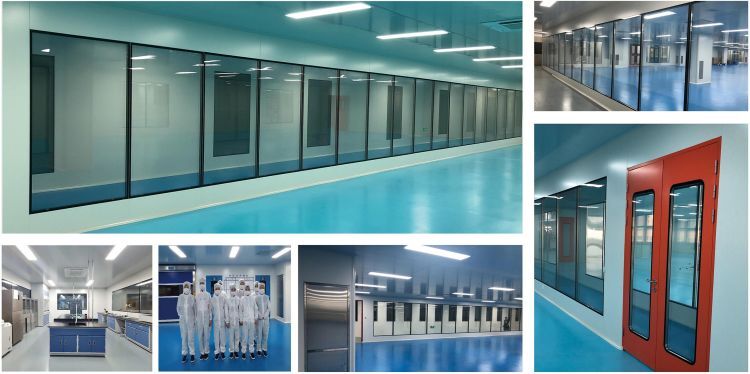GMP Clean Room Project: Ensuring Pharmaceutical Quality and Safety
- 2024-01-31
- View 13
In the world of pharmaceutical manufacturing, maintaining the highest level of cleanliness and quality is essential to ensure the safety and effectiveness of products. This is where GMP clean room projects come into play. In this article, we will discuss the significance of GMP clean room projects and the steps involved in their implementation.

What is a GMP Clean Room?
A GMP clean room is a controlled environment in which pharmaceutical products are manufactured under strict guidelines, known as Good Manufacturing Practices (GMP). The purpose of a GMP clean room is to minimize the risk of contamination during the manufacturing process by controlling the level of airborne particles, temperature, humidity, and pressure within the room.
Why are GMP Clean Rooms Important?
GMP clean rooms are essential in ensuring the quality of pharmaceutical products. By controlling the environment in which products are manufactured, GMP clean rooms minimize the risk of contamination, which could affect the safety and effectiveness of the products. A GMP clean room also helps to ensure consistency in the manufacturing process, which is critical in producing products that meet the required specifications.
Steps Involved in Implementing a GMP Clean Room Project
Implementing a GMP clean room project requires careful planning and execution. Here are the key steps involved in the process:
1. Designing the GMP Clean Room
The first step in implementing a GMP clean room project is to design the clean room. This involves selecting the appropriate size and layout of the room, as well as the materials and equipment that will be used in the manufacturing process. The design must be based on GMP guidelines to ensure that the clean room meets the required standards.
2. Installing the Clean Room
Once the design is finalized, the next step is to install the clean room. This involves constructing the clean room and installing the equipment and materials that will be used in the manufacturing process. The installation process must be carried out carefully to ensure that the clean room is free from any potential sources of contamination.
3. Validating the Clean Room
After the clean room is installed, it must be validated to ensure that it meets the required standards. This involves testing the room's air quality, temperature, humidity, and pressure to ensure that they are within the specified limits. The validation process must be carried out by qualified professionals who are trained in GMP guidelines.
4. Implementing Standard Operating Procedures (SOPs)
Once the clean room is validated, the next step is to implement standard operating procedures (SOPs). These are detailed procedures that describe the steps involved in the manufacturing process, from start to finish. SOPs are critical in ensuring that the manufacturing process is consistent and that products are produced according to the required specifications.
5. Training Personnel
The final step in implementing a GMP clean room project is to train personnel who will be working in the clean room. This involves providing training on GMP guidelines, SOPs, and the use of equipment and materials. It is critical to ensure that personnel working in the clean room understand the importance of maintaining a clean environment and are trained to carry out their tasks in a way that minimizes the risk of contamination.
Conclusion
GMP clean rooms are critical in ensuring the quality and safety of pharmaceutical products. Implementing a GMP clean room project requires careful planning, execution, and validation to ensure that the clean room meets the required standards. By following the steps outlined in this article, pharmaceutical manufacturers can ensure that their products are produced in a clean and controlled environment, minimizing the risk of contamination and ensuring consistency in the manufacturing process.
FAQs
Q1. What are the requirements for air quality in a GMP clean room?
A: The air quality in a GMP clean room must meet specified limits for airborne particles and microorganisms. This is typically achieved through the use of HEPA filters and other air filtration systems.
Q2. How often should a GMP clean room be validated?
A: GMP clean rooms should be validated on a regular basis, typically once a year or after any significant changes to the room or equipment.
Q3. How long does it take to implement a GMP clean room project?
A: The timeline for implementing a GMP clean room project can vary depending on the size and complexity of the project. It can take several months to a year or more to complete.
Q4. What are the consequences of failing to maintain a GMP clean room?
A: Failing to maintain a GMP clean room can lead to contamination of pharmaceutical products, which can have serious consequences for patient health and safety. It can also result in regulatory violations and damage to a company's reputation.
Q5. How can a company ensure ongoing compliance with GMP guidelines for a clean room?
A: Ongoing compliance with GMP guidelines can be ensured through regular monitoring and testing of the clean room environment maintaining detailed records, and providing regular training to personnel working in the clean room.
Kwang Cleanroom is proud to offer examples of a variety of our cleanroom projects below. Modular Cleanroom Systems、 Cleanroom Doors、Cleanroom Windows、Purification Projects In Other Industries.
